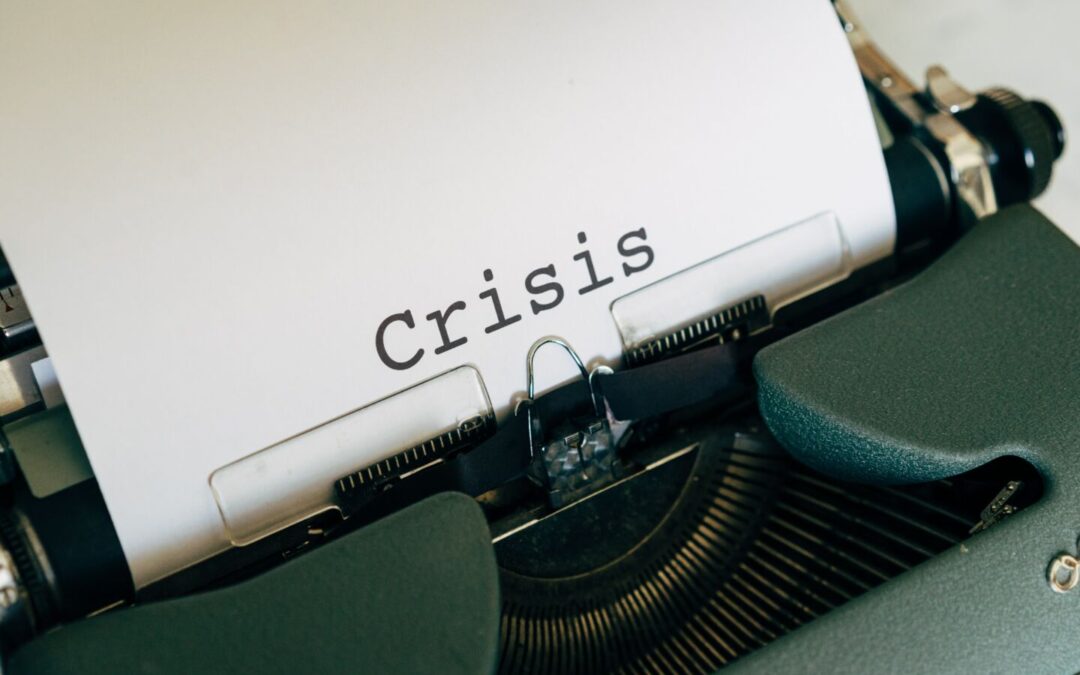Hi there,
What’s the Story?
Thanks to so many of you for the wonderful feedback on the interview with Dr. Richard Bandler last week. This week, the Changing Minds podcast episode explores some of the most important strategies for stopping the way we think negatively. This one has real potential to be a game-changer. video.owenfitzpatrick.com
______________________________
How to Stop Thinking Negatively
Estimated reading time: 9 minutes 23 seconds
When I was 14 years old, I wanted to end my life.
I was severely depressed and lost in a constant spiral of negative thinking.
What saved me was losing myself in the world of psychology, cognitive behavioral therapy, hypnosis, NLP, philosophy, and neuroscience.
As I studied more about the brain and the mind, I began to learn techniques designed to transform thinking. As a result, I survived and eventually thrived.
A big part of what I learned wasn’t so much about thinking positively. It was more about learning to stop thinking as negatively. To me, there is an important difference here. What brought me down wasn’t the absence of positive thoughts as I would sometimes think positively. It was that my positivity would be followed by negativity.
This week, I want to explore the world of thinking negatively. I want to differentiate it from negative thinking. I will explore why we think negatively in the first place. I’ll describe when it can help and how it can be harmful. I’ll discuss how we’re negative. Finally, I’ll provide you with some fundamental strategies you can use, starting now, to reduce this tendency.
Negative Thinking versus Thinking Negatively
I’ve often used these terms interchangeably but I see a useful distinction between them. Let me walk you through where I’m going with this.
Negative thinking suggests a particular form of thinking. It generalizes your thoughts almost as if the thoughts themselves are negative. While it might be easy to argue that they are, sometimes positive thoughts can end up having negative consequences which begs the question:
‘Are they actually positive thoughts or might they be negative thoughts since they lead to negative outcomes?’
I prefer the concept of thinking negatively because it suggests that, in that moment, you are thinking in a negative direction. It doesn’t mean the thoughts themselves are negative… rather it speaks to how you are thinking.
It also offers the idea that we can simply think in a new direction.
While I’m sure this distinction might seem redundant to most, I believe understanding that it’s not that we ‘experience’ negative thinking but that we ‘think negative’ can make a huge difference because it puts the locus of control squarely back with us. Once we come to terms with the fact that we ‘do it’, we can start doing something different.
First, though, let’s explore why we do it.
Why Do We Think Negatively?
We think negatively for many reasons.
First, our brains have a negativity bias because they are primed to keep us alive. Our brains are prediction machines and are dedicated to figuring out what’s going to happen next so that they can make the best decision needed to keep us alive and regulate our nervous system.
Since survival is not enhanced much by gaining things that make us feel good, our brains prioritize anything that threatens us. Thus, they are wired to immediately point out the negative anywhere we go to ensure that we are aware of the threat and take evasive action. While this was particularly helpful to our hunter-gatherer ancestors, nowadays, it isn’t so helpful as our physical survival is rarely at stake.
Second, thinking negatively helps us avoid disappointment. If you don’t expect something to go well, then you won’t feel as bad if it doesn’t. But how does this work? One of the chemicals the brain releases is called dopamine. Known as the molecule of motivation, it is released whenever we anticipate rewards.
Let’s imagine that when something fantastic is expected to happen, we get a big burst of dopamine anticipating this experience. If it doesn’t happen there is a big crash. This makes us feel awful because there is a big distance between how good we felt and how we feel when we’re let down. If you think negatively, you never build the dopamine spike in the first place therefore you don’t risk the drop and you stay at the same level as before.
A third reason we think negatively is to bond with others. Often, one of the things that people connect the most on is the complaints that they have and the pain they share. When someone else is feeling as negative as you, it makes you feel a little better that you’re not the only one suffering.
Finally, thinking negatively can help us prepare for bad things to happen. Expecting that there will be problems helps us prepare for those problems. This gives us a better chance of succeeding in the long run.
With such advantages, it’s a wonder that we’re not all wandering about thinking as negatively as possible.
However, there are, of course, plenty of downsides to thinking negatively.
Why Thinking Negatively Harms Us
Thinking negatively triggers the release of two neurochemicals: cortisol and noradrenaline. While both of these chemicals are useful in certain contexts, we are negatively impacted by them when we experience them consistently.
These chemicals can suppress the immune system and lead us to experience several physical and mental health problems as a result. These include:
- Increased stress and anxiety levels
- Impaired immune system function
- Increased risk of heart attack
- Cognitive decline
- Worsening depression
While having a different mindset about stress can mitigate its impact, when we think negatively this can exacerbate the symptoms of stress on our systems. So thinking negatively creates stress and makes stress worse. Two for one.
How We Think Negatively
Understanding how we think negatively can be explained largely by exploring cognitive distortions. These are mental habits we build to optimize the efficiency of our thinking. Unfortunately, these shortcuts can harm the accuracy of our thoughts and the effectiveness of our decisions.
Let’s talk through ten different distortions that we use to think negatively. Here are ten explanations and examples for each.
1. All or Nothing Thinking
This means thinking in absolutes, like “always” and “never”, or viewing situations as either perfect or a complete failure, without acknowledging any middle ground.
“If I can’t do this presentation perfectly, it means I’m a complete failure.”
2. Mind Reading
This is assuming you know what others are thinking without having sufficient evidence, often leading to negative assumptions about their perceptions of you.
“I know my friends think I’m boring because I don’t go out as much anymore.”
3. Perfectionism
Perfectionism is about setting unreasonably high and precise standards for oneself or others, believing anything less than perfect is unacceptable and a failure.
“I must get As in all my courses, or I’ve failed.”
4. Overgeneralizing
This involves making broad generalizations based on a single or few events, leading to a negative outlook on future occurrences.
“Nothing ever goes right in my life.”
5. Catastrophizing
This means anticipating the worst possible outcome in a situation, often leading to heightened anxiety and stress over events that may not happen.
“If I make a mistake at work, I’ll probably get fired and never find a job again.”
6. Maximizing
Maximizing is exaggerating the importance or impact of negative events or traits, often at the expense of the positive aspects of a situation.
“Each time I try to relax, something goes wrong. It’s like the universe is against me.”
7. Minimizing / Discounting the Positive
Downplaying or dismissing positive experiences, achievements, or qualities, often leads to a skewed negative perception of oneself or the situation.
“Sure, I got promoted, but anyone could have done it.”
8. Labelling
Assigning a fixed, usually negative, label to oneself or others based on specific actions or mistakes, without considering the complexity of the situation.
“I’m so clumsy. I am hopeless at physical skills.”
9. Personalization
Attributing external events to oneself without evidence, often blaming oneself for things outside one’s control.
“I knew this wouldn’t work out. I ruin every relationship I’m in.”
10. Emotional Reasoning
Believing that what you feel must be true automatically, so if you feel stupid, you believe you must be stupid, regardless of the evidence.
“This is never going to work out. I’m not good enough. I feel like a fraud here.”
Understanding these distortions at play is such an important thing to do when tackling thinking negatively. Once we can see them we can challenge them.
How to Stop Thinking Negatively
To stop thinking negatively, there are a few things we need to do:
1. Become more aware of your thinking
First, we need to boost our ability to notice the habits and distortions of our thinking in action. Pay attention to how you’re thinking and in what direction.
2. Identify situations where negative thinking can be beneficial
Does this way of thinking help you prepare for the adversity you might be facing? Does it motivate you more to succeed in thinking negatively about this situation?
3. Write down the thoughts you think a lot and identify the distortions at play in them
Make a list of your internal dialogue. What kinds of thoughts do you have that make you feel bad or lead you to bad consequences? Using the distortion list above, identify every distortion you can find in your thinking.
4. Take each thought and hunt for the evidence that proves that the distortion is true. Look for more than one or two pieces of evidence
Try to find at least four pieces of solid evidence to support the negative beliefs or statements. If you struggle with this, you’ll immediately find yourself doubting them. If you find this easy, move on to step five.
5. Use percentage and probabilistic thinking to evaluate the other possibilities
Ask yourself how sure you are that this belief is true. What percentage would you give yourself? How much would you bet that it’s correct? This helps you identify the level of certainty you have and provides you with the understanding that you might not be as sure as you think.
6. Practice gratitude
Practice gratitude regularly. This involves finding all the things that you have to feel grateful for in life. This trains you to start thinking in terms of what you have to feel good about as opposed to what you have to feel bad about.
7. Get it out of your system
One very effective way of handling negativity is to purge it from your system in a healthy way. This involves journaling about your worries and frustrations or exercising and imagining you are burning off your negative feelings. You are looking to find various ways to expel the emotion in a useful way. (as opposed to taking your feelings out on somebody else)
8. Become a smarter thinker
Decide to become the kind of person who thinks more smartly. This doesn’t always mean a positive thinker as there are some situations where negative thinking is useful. Seeing yourself as someone who does think smarter, can help you to stay more positive because it’s useful in many places.
9. Index your language
Indexing your language is about being more careful in expressing your thoughts. Instead of saying ‘I am such an idiot’ you could say ‘I feel like such an idiot today’. While that might not seem significantly different it really is. It is more temporary and there’s a big difference between feeling like something and being something.
10. Consider the impact
Lastly, consider the impact of thinking in this way. Does it help you? Does it hurt you? What is a more useful way to think?
By implementing these strategies, you will find yourself thinking smarter and better in the future.
When I look around social media, I see far too many examples of empty platitudes and inspirational quotes that make us feel good temporarily but don’t change anything.
Research shows that reducing the amount that you think negative is more important than thinking positive.
The strategies we’ve discussed and the distortions we have examined offer you the chance to build powerful skills that will lead you to think more positively more often but, crucially, think less negatively less often.
My life would be profoundly different today (if I even would have made it) if I hadn’t learned the kinds of techniques and skills above. While our brains don’t come with instructions, even just a few of these strategies can turn your life around.
______________________________
The Brain Prompt
A few weeks ago, we lost one of the most important psychologists of the last 100 years, Danny Kahneman. Danny was one of the pioneers of Behavioral Economics and a Nobel Prize winner. His book ‘Thinking Fast and Slow’ is one of my favorites and he truly is one of the greatest.
While he admitted to being more of a pessimist in general, he had a wonderful quote I wanted to share:
“Nothing in life is quite as important as you think it is while you’re thinking about it.”
Daniel Kahneman
Why I love this is the notion that our thinking magnifies the importance of the thought… which gives us back control over things. Remembering that what you’re thinking might not be as important as it feels right now, can often help us feel a little better and think a little better too.
If you know someone who would find this newsletter useful, please forward it on. They can sign up at owenfitzpatrick.com/newsletter
Cheers,
Owen.
P.S. To watch this week’s Changing Minds podcast episode on how you can stop thinking negatively, check it out here.





